Groups

Durham Pathways History Group
About the group This project group visited and photographed Durham's World Heritage Centre as it is today.
Created 5 February 2014

history group |
||
|
From the top of the castle the Bishop could see everyone coming and going from Durham. In the 14th century it would have been hard for enemies to take over the castle. First attackers would have had to cross the River Wear. Then they would have had to get up the rocky riverbanks, and then they would have to get over the City Wall, before they got to the castle. This is Richard’s view of Durham Castle keep |

history group |
|

The monks had brought the body of St Cuthbert to Durham in 995. The Cathedral was probably built here because the site was on a hill, surrounded by the River Wear. The Castle would help to protect the Cathedral. This is David’s picture of Durham Cathedral. |

history group |
|
|
The Bishop of Durham was very rich because he had so much land. In the Exchequer, the accounts were kept of the money which the Bishop got from his lands and his rights. In medieval times, he could claim stray horses, and even whales washed up on the coast of County Durham. Today the Exchequer building is part of Durham University Library. This is Nina’s picture of the old Exchequer. |

history group |
|
|
The old Grammar School was only for boys. Today the Grammar School is part of the University Department of music. This is Richard’s picture of the old Grammar School. |

history group |
|
|
This picture shows the old Alms Houses, built 1666, and also Cosin Library, built 1669.
|

history group |
|
|
The Alms houses were built for old people to live in. When the university wanted to the use the building, the old people moved to new Alms houses around the corner in Owengate (or Queen Street as it was called then). The building is now a café. This is Sandra’s picture of the doorway into the old Alms houses. |

history group |
|
|
This is Gloria’s picture of the Cosin Library doorway |

history group |
|

This is Christine's picture of Cosin Hall. |

history group |
|

Su's picture of Abbey House. |

history group |
|
|
Abbey House can be seen on this picture, at the right hand side of the green, near the Cathedral.
|

history group |
|
|
This is Gloria's photo of the Diocesan Registry building. |

history group |
|
|
The Registry building is shown on this picture in 1929. By then it was used by the university.
|

history group |
|

Christine's picture of the Bishop's stables. |

history group |
|
|
The Bishop's stables building can be seen on this photo in 1929.
|

history group |
|
|
This is Gloria's picture of the doorway to the University Library. |

history group |
|

(EAW014481) |

history group |
|
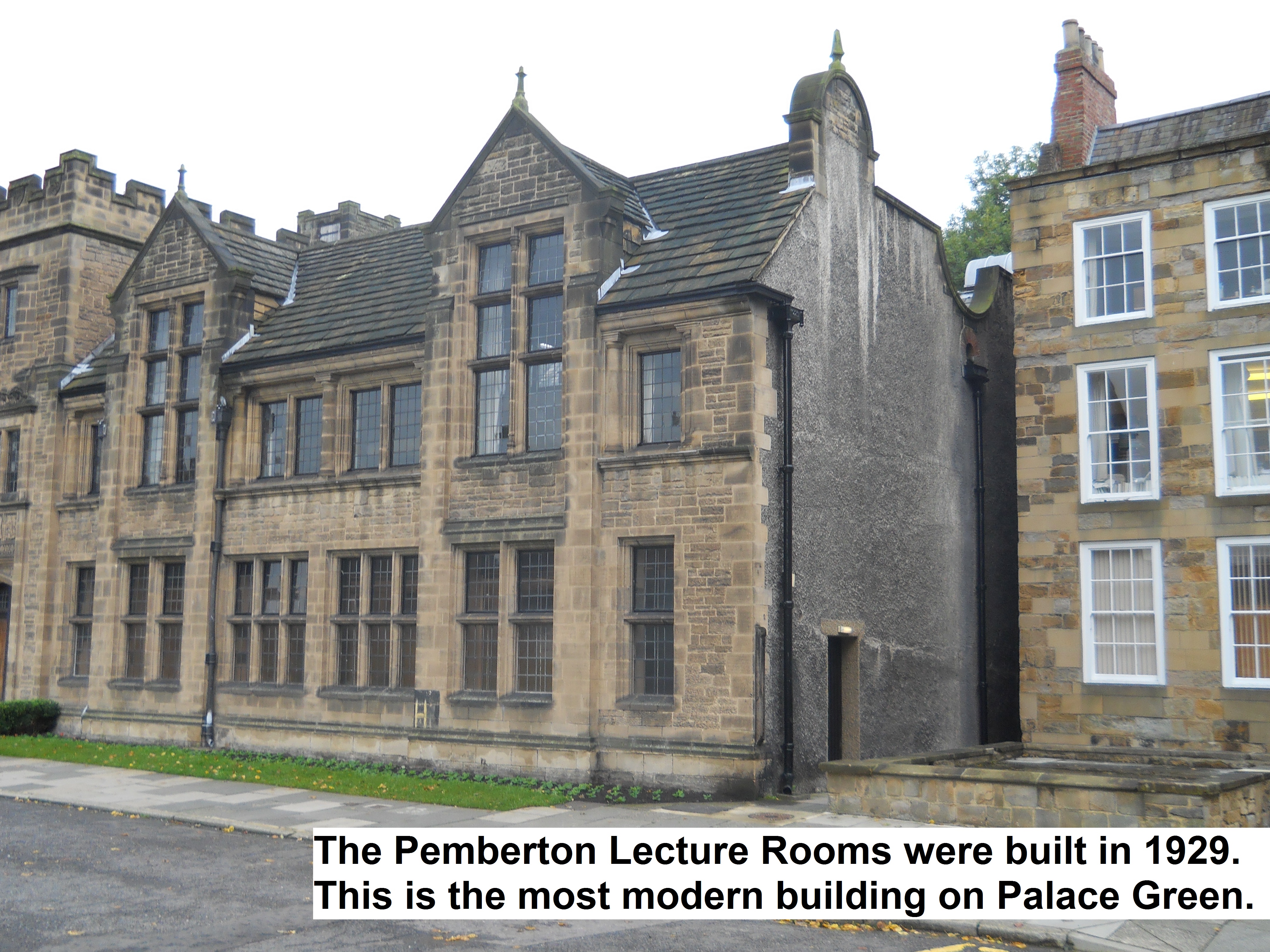
|

history group |
|
|
|

history group |
|
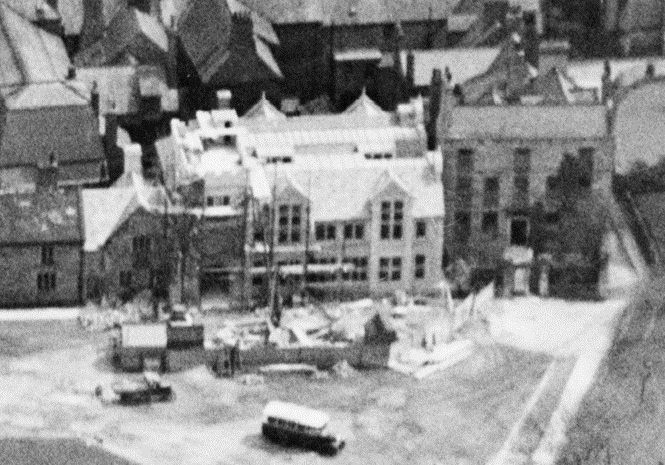
Durham City in 1929. Copyright English Heritage (EPW026591) |

history group |
|
|
|

history group |
|
|
The grass covers a much bigger area than it did in 1929. |

history group |
|
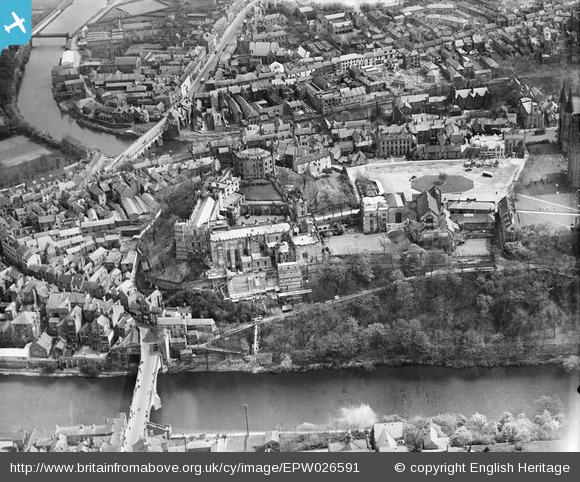
Durham City in 1929. Copyright English Heritage (EPW026591) |

history group |
|
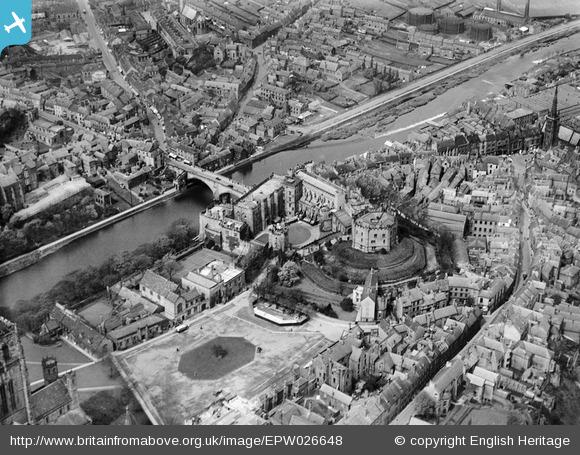
This picture shows buildings we photographed. It shows the Cathedral, the old Grammar School, the Diocesan Registry, Palace Green Library, Cosin’s Library, the Exchequer and the Castle, and the backs of the buildings on the opposite side of Palace Green. Durham City in 1929. Copyright English Heritage (EPW026648) |

history group |

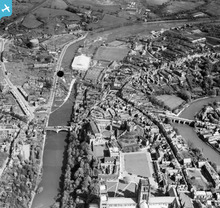
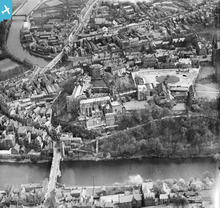

see image record
They have photographed the buildings on Palace Green as they are today, including the Cathedral and the Castle.
The group has found out about all the buildings on Palace Green, when they were first built, what they are used for today, and what they have been used for in the past.
Here are our photos and some information about each building.
We have arranged the photos of the buildings in date order, starting with the oldest buildings.
We have also added some of the Britain From Above pictures showing the buildings. Can you spot them?